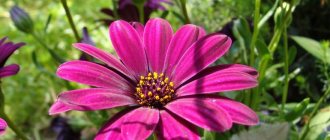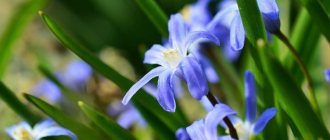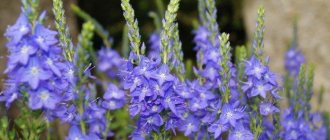» Pink colors » Amaranth color
Amaranth is a bright borderline shade between red and pink. It is similar to crimson, but its name comes from a different plant. Amaranth is native to South America; its burgundy-red-pink inflorescences are shaped like enlarged birch catkins. And, of course, its rich, deep color became the basis for the spread of this plant, as well as the color under its name.
At the junction, shades of amaranth color can range from warm red-pink to cool purple. One way or another, this shade contains blue and red, intertwined, they give strength and wisdom to this shade, as well as sexuality and sensuality. This bright shade suits expressive appearance and expressive character.
general information
Amaranth is a herbaceous annual of the same family, native to South America. Many thousands of years ago, the Indians considered it the flower of immortality and brewed a miraculous drink from it. Amaranth grains are popular all over the world even now.
Amaranth inflorescences are sometimes called cock's comb or fox's tail for their characteristic shape and color. They are equally good at any time of the year, fresh or dry. A large panicle is collected from soft dense spikelets of burgundy, purple or yellow color. It is almost impossible to visually isolate individual flowers.
Amaranth blooms in early summer and continues to bloom until frost. It has large matte green or burgundy leaves with raised veins. Amaranth is a tall and dense plant up to 1.5, and sometimes up to 3 m.
Photo: 2sotki.ru
Features of wood
Amaranth wood is characterized by high strength and wear resistance. It does not rot and tolerates moisture well. Its wood has a fine or medium texture, chaotically located noticeable pores and poorly visible annual rings. In some species the rings are clearly visible.
Peltogin fibers are usually straight, but can form slight irregular waves. Its hard and dry wood has a variable shine and high density (880 kg/m3). It withstands the influence of many external factors: it does not rot or dry out. Insects and mites do not grow in it, but wood is powerless against pests such as mollusks.
The smell of amaranths is usually not noticeable or completely absent. Only a few representatives can boast of a sharp, pronounced aroma. The tree is not poisonous and in most cases harmless. But with individual intolerance, an allergy to it can cause irritation of the mucous membranes, rash and nausea.
Types of amaranth
There are many types of amaranth, and they are grown for completely different purposes. There are forage, vegetable and ornamental crops, and there are also ordinary wild weeds.
Vegetable amaranth
This species quickly and actively grows abundant foliage. It is edible along with shoots and grains. Vegetable amaranth is considered the most useful among its relatives.
Photo: kartoska.ru
Yellow amaranth
A compact decorative variety with a height of only 70 cm. One bush can have leaf blades of different shades of green, orange, yellow and bronze. The inflorescences are also yellow.
Photo: floweryvale.ru
Tricolor amaranth
This amazing species belongs to the decorative deciduous species. Each leaf is painted in several colors at once - green, yellow-orange and crimson. Its inflorescences are also large, bright yellow-red.
Photo: kartoska.ru
Tailed amaranth
A beautiful ornamental annual with large pendulous clusters that last until October. The varieties whose shoots are purple are very impressive.
Photo: 2sotki.ru
Dark amaranth
A tall, low-branching species up to 1.5 m tall with decorative erect inflorescences. Both the flowers and pointed leaves have a striking purple hue.
Photo: amaranth-ukr.com.ua
Upturned amaranth
This more compact and less branched species reaches an average height of 1 m. It has green inflorescences, a very powerful tap root, fleecy shoots and large ovoid leaves up to 14 cm in length.
Photo: 2sotki.ru
Paniculate amaranth
It is simply red, with red elongated inflorescences, which can be straight or drooping. It has very powerful, strong shoots up to 1.5 m tall.
Photo: zen.yandex.ru
Monarda (50 photos): types, planting and care in open ground
Amaranth color in clothes
Amaranth is a color with medium-high contrast, therefore its appearance should be contrasting, such as that of “winter”, “contrasting summer”. “Spring” has a fairly clear skin color, so it also suits her.
Although the amaranth color has a common root with pink, it does not deceive about the defenselessness and trepidation of a girl with this color of clothing. On the contrary, it speaks of her inner strength and ability to act on an equal basis with men. This color is more suitable for a business woman than for someone looking for love, unless the search comes down to dominance over a man. Amaranth is good for outdoor activities, sports, clubs and shopping.
Amaranth care
The correct choice of soil is one of the main conditions for keeping amaranth. Otherwise, it causes no more problems than any other garden annual!
Temperature and lighting
Amaranth is very unpretentious and can withstand almost any temperature. As a southern resident, he was accustomed to the heat and scorching rays of the sun. But the culture adapts well to cold snaps down to 0 degrees.
Photo: vk.com
Watering
Mature amaranth does not need additional watering at normal times. Water it only when the soil dries out, if the rainless season has been prolonged. But young plants, especially during the rooting period, need to be watered frequently and abundantly.
Photo: domashniecvety.ru
The soil
The soil should be moderately moist and not acidic, because this promotes the development of root rot. Choose areas with loose and nutritious soil, and add a little lime before planting.
Photo: etsy.com
Fertilizers and fertilizing
Amaranth is fed approximately 3-4 times in the evening, when the heat subsides. You can use an ordinary mullein solution, which is even better than mineral mixtures. Nitrogen fertilizers are applied for the first time when the seedlings grow to 20 cm. But reduce the recommended concentration by half.
Photo: flo.discus-club.ru
Calendula (50 photos): types, planting and care in open ground
Amaranth in the bedroom interior? How is this possible?
You can also use amaranth paint in the bedroom. To avoid irritation, combine it with delicate colors. It can be a refreshing white or a soft shade of gray, but also don't forget to combine amaranth with pink. Pale pink and an amaranth wall can create a rather romantic and sweet combination. It can be easily disrupted by adding elements made from natural materials to the composition. A wooden floor, a wicker headboard or macrame flower beds will make a bedroom with an amaranth wall a cozy place to relax.
Planting and propagation
Amaranth can be planted with seeds directly into the ground, starting at the end of April. Planting of seedlings is carried out earlier - at the end of March, and the seedlings in this case are transplanted into the garden in the second half of May.
Seeds are planted in furrows to a depth of 1.5 cm one at a time, with a distance of about 45 cm between rows and 10 cm between seeds. It is better to spend time on sowing once than to deal with planting seedlings later. The taproot rhizome does not like transplantation and unnecessary disturbances. Shoots appear within 1-1.5 weeks.
Seedlings are planted in containers according to the same principle and left in a warm, bright place. For watering, use a sprayer and maintain the temperature at 20-22 degrees. In a week, expect shoots. When the first leaves appear, remove the weakest seedlings and plant the rest in peat pots.
Photo: steklotorgopt.ru
Floral and berry shades of red
flower-berry descriptive adjectives in shades of red in the Japanese and Russian languages than are presented on the green pages.
to describe all the flower and berry shades of red ... one of the readers will continue this fascinating study... In Japan: cherry blossoms ..., in Russia: red viburnum - a symbol of beauty and love ... according to one of the popular beliefs, viburnum is a symbol first, necessarily unhappy love - viburnum berries - bitter drops of blood ... let's not talk about sad things, let's continue to be seduced by shades of red
Diseases and pests of amaranth
Most often, amaranth suffers from root rot, which leads to the rotting of adult plants and the fall of seedlings. This can be avoided by choosing the right site, maintaining distance between bushes and controlling humidity.
Fungal diseases that affect shoots and leaves are treated with fungicides. In addition, there are varieties with increased immunity - we advise you to pay attention to them.
The most common enemy of amaranth is the weevil and its larvae. They not only eat leaves and stems, but also contribute to the development of fungal diseases. Colonies of aphids also periodically settle in dense bushes. Inspect your plantings regularly and use insecticides as needed.
Photo: flickr.com
Statica (50 photos): types, care and planting in open ground
Processing and Application
Amaranth wood is highly valued among manufacturers of furniture and various parts, but working with it has many nuances that must be taken into account when processing. If the tools are operated at high power, the wood begins to heat up and releases a sticky and very viscous gum. Because of this feature, the equipment must be frequently cleaned and treated with special solutions, otherwise the resin will quickly render it unusable.
At the same time, amaranth glues well and can be sanded. It can be coated with wax and various varnishes and dyes, but their base must not be alcohol-based. Alcohol-based products “kill” all the beauty of this wood, depriving it of its unique purple-burgundy hue.
One of the distinctive properties of amaranth wood is its ability to withstand high stress and strong dynamic loads. Due to this, it is used for the manufacture of floor coverings, decks, as well as sports equipment, for example, gymnastics equipment, skis, cues, and diving boards.
The unusual color of the wood is popular in decoration, so amaranth is widely used for inlaying carved items, creating figurines and other art objects. It is used to make panels for wall cladding, carved inserts for sofas, bar counters, tables, chairs, cabinets, headboards and other interior items.
Amaranth – photo
In our latitudes, amaranth is just gaining mass popularity, so, most likely, you have not seen it very often. In this case, be sure to take a look at our photo selection!
Photo: ecomne.ru
Photo: numerologyalexk.com
Photo: zen.yandex.ru
Photo: chudogryadka.mirtesen.ru
Photo: blog.leto-shop.ru
Photo: 2sotki.ru
Photo: serviceyards.com
Photo: artfile.ru
Photo: greeninhouse.ru
Photo: stiralkovich.ru
Photo: 2sotki.ru
Photo: gwallsbest.com
Photo: erpstat.ru
Photo: healthy-inform.ru
Photo: 2sotki.ru
Photo: plantorama.ru
Photo: dachadecor.ru
Photo: flo.discus-club.ru
Photo: na-dache.pro
Photo: 2sotki.ru
Photo: fi.pinterest.com
Photo: bober-medcentr.ru
Photo: sovocrim.ru
Photo: evgenyart.livejournal.com
Photo: amaranth-health.com
Did you like the post? Subscribe to our channel in Yandex.Zen, it really helps us in our development!
Existing species and varieties
Over 900 varieties of amaranth have been classified, differing in flower structure and color. The main representatives include:
Scarlet
Dark
Tricolor
Caudate
Color blindness or color blindness
Color blindness, also known as color blindness, is an impairment of color vision, i.e. ability to see colors or see differences between them. People with this disease, under certain circumstances or against certain backgrounds, have difficulty seeing objects, combining colors (for example, when choosing clothing), or working with color codes, such as graphical user panels on computers. Color blindness is a general term that includes several specific conditions. Here you will find information about how amaranth pink is seen by people with different types of color blindness.
Growing and care
Amaranths are one of the easiest annuals to grow. It is important to properly care for amaranth by performing the following procedures:
- Pinching . To stimulate flowering, you can pinch the growing points.
- Supports . Tall varieties should be planted near supports.
- Removing faded inflorescences . Wilted inflorescences or plants must be removed regularly.
- Watering . Amaranths require regular watering (even daily in hot weather). This is especially true for plants grown in containers.
- Diseases and pests of amaranth . The plant can sometimes be infested with aphids. Ladybugs are very helpful in pest control. To protect plants, you can spray them with infusion of horseradish, garlic or horsetail in early spring. When pests appear en masse, it is necessary to spray them with appropriate chemicals; for more details, see our article - How to get rid of aphids.
- Fertilizer . Plants respond favorably to organic fertilizer, so they can be fed with vermicompost or rotted compost or mullein solution. It is also useful to feed amaranth with calcium nitrate, which strengthens the shoots, which is especially important for tall varieties. You can use complex fertilizer for flowering plants. Then, from spring, amaranth should be fed every 1-2 weeks with a dose of liquid fertilizer. When growing in pots, soil and fertilizer can be mixed before planting, and then the plant can be fed once every 2 weeks.
Beware of fertilizers rich in nitrogen; amaranths tend to grow very lushly after it, which is why they cannot sustain the majestic inflorescences later. Even supported by stakes, they often break and tip over.
Amaranth on the wall. What furniture and accessories are suitable?
Rich and light-absorbing, amaranth is best suited for large, bright rooms. For example, lofts or open-plan kitchens. This bright color is perfect for places where family life is concentrated. The color amaranth in the interior of the kitchen, dining room or living room will add energy and improve appetite. For an amaranth wall, choose furniture of modest shapes and muted colors. Avoid a lot of accessories - choose a few quality gold or silver jewelry. Use wood flooring.
Energetic amaranth is a great color for an elegant home office. Against a wall painted this color, a modern desk with a black top and a comfortable chair with a gray finish will look great. Don't forget about plants - lush greenery will be appropriate against an amaranth-colored wall.
Amaranth on the wall. What furniture and accessories are suitable?
Rich and light-absorbing, amaranth is best suited for large, bright rooms. For example, lofts or open-plan kitchens. This bright color is perfect for places where family life is concentrated. The color amaranth in the interior of the kitchen, dining room or living room will add energy and improve appetite. For an amaranth wall, choose furniture of modest shapes and muted colors. Avoid a lot of accessories - choose a few quality gold or silver jewelry. Use wood flooring.
Energetic amaranth is a great color for an elegant home office. Against a wall painted this color, a modern desk with a black top and a comfortable chair with a gray finish will look great. Don't forget about plants - lush greenery will be appropriate against an amaranth-colored wall.











